At CarnivoreWeb.com, we independently review products and outfitters. However, we may earn a commission when you purchase products through links on our site. Read our affiliate policy. Read about how we test products.
Flora Kamimura brings South American and Hawaiian influences to wild game cooking.
There’s a primal, almost caveman-like quality to cooking over open fire. Add an animal you’ve hunted to the mix, and it doesn’t take much imagination to picture our ancient ancestors sitting among us, enjoying the conversation and camaraderie. Growing up poor in southern Brazil, Flora Kamimura spent Sundays with her family, kicking back and creating daylong, multigenerational meat feasts, where every morsel of protein was delicately infused with hardwood flavors.
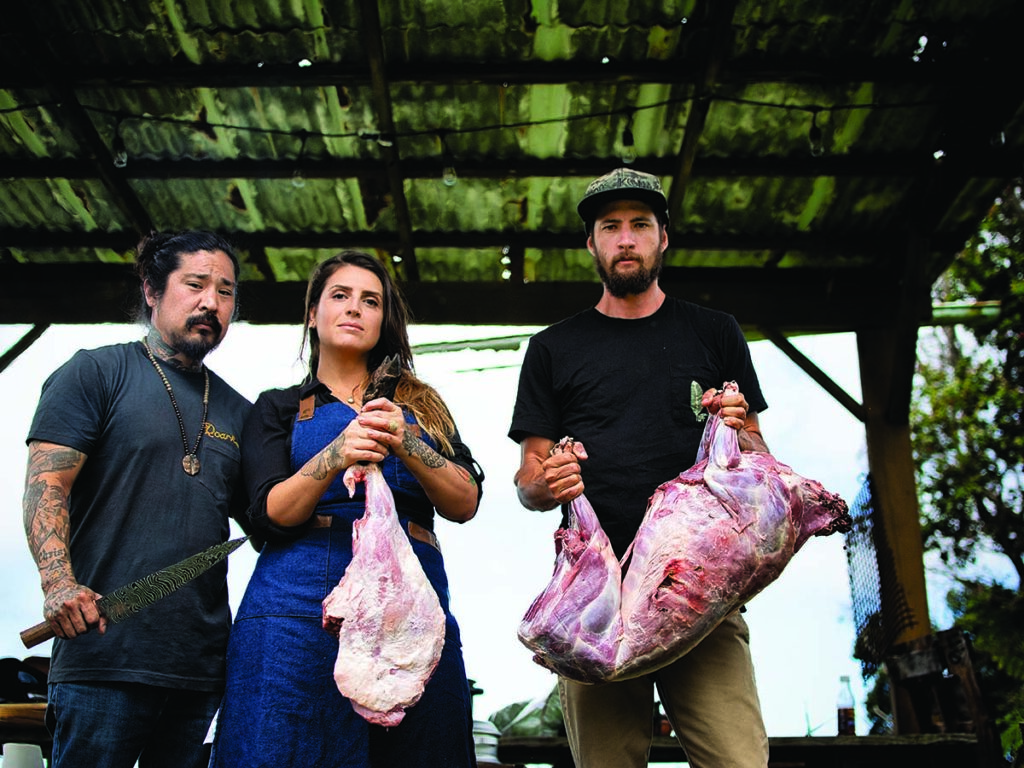
As a professional chef in Hawaii, she’s been exposed to a melting pot of island culture, where Japanese, Portuguese, and Filipino histories mingle with traditional Hawaiian fish, game, produce, and values to create an intense international cuisine. “When I went to culinary school I wanted to emulate the super high-end French and Italian chefs — the things we experienced growing up in Brazil were kind of pushed to the background. Living in Hawaii for three years has made me realize just how special that style of cooking is.”
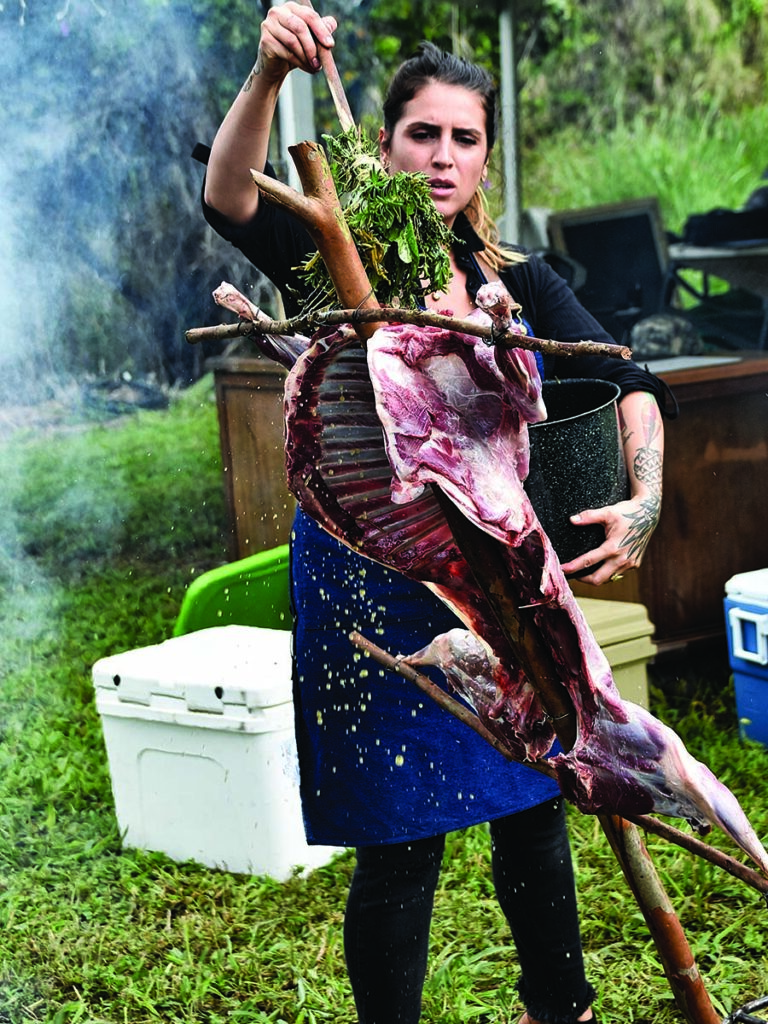
Cooking on an open fire imparts flavors impossible to recreate on a backyard charcoal grill, let alone a propane or electric counterpart, but there’s a trade-off. You have to be prepared to invest the time to constantly monitor and tend the fire, planning ahead to replenish coals as they burn down. You can’t just add wood and expect the fire to respond immediately to your demands. More likely, it’ll flare up and char, rather than cook, so the active part of the fire is kept distant from the meat. Why invest the time and effort to learn the mysteries of fire?
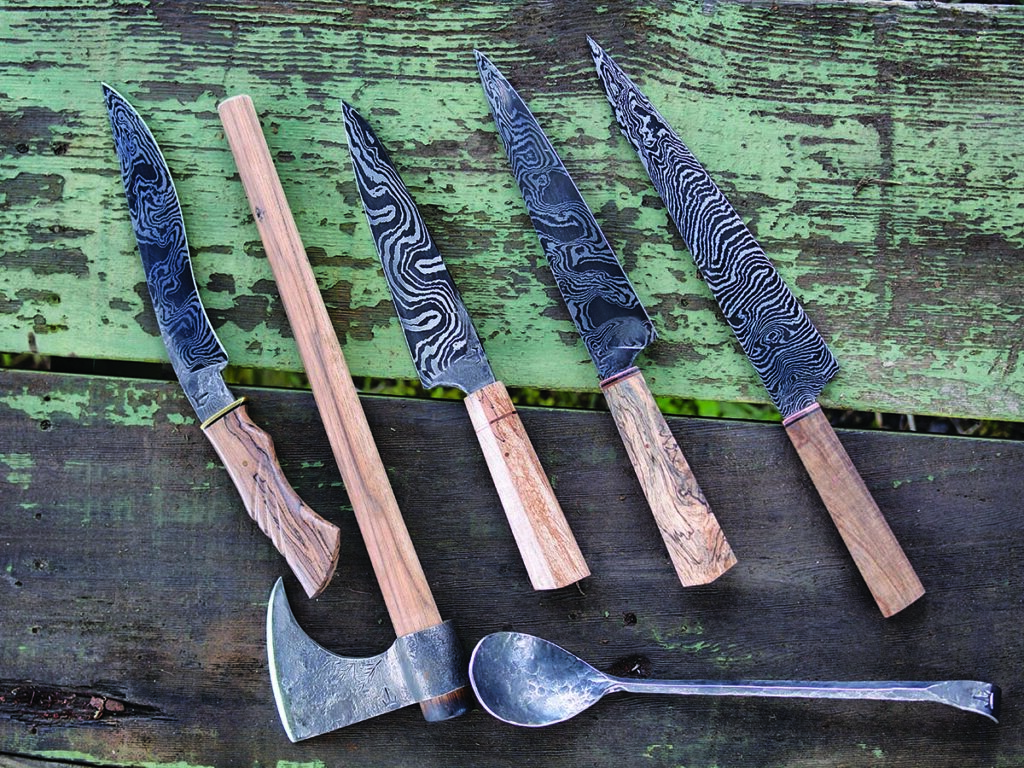
“I love this way of cooking, because it’s such a challenge. It’s like starting in a new kitchen every day,” says Kamimura.“You have wind, you have rain, you have different types of wood — it takes so long and you have to give so much love and attention. I feel like I’m representing my people, and they’re so proud of what they do that I can’t afford to mess it up. I have big shoes to fill.”
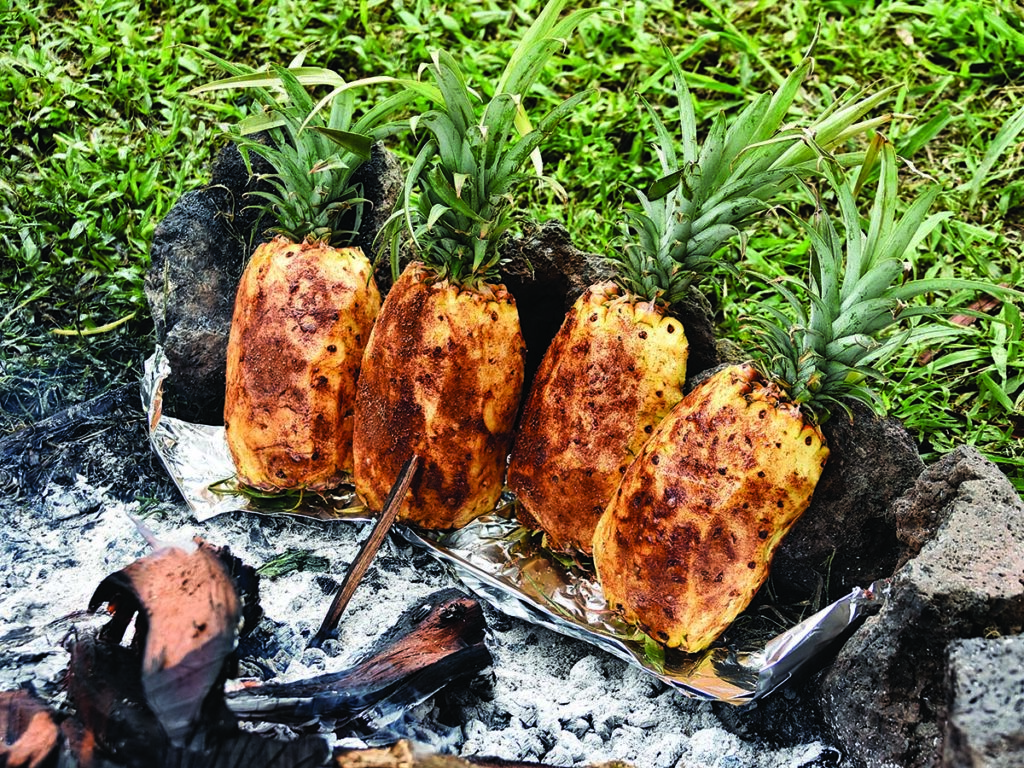
In order to further refine heat input, an asado cross is used to lower or raise the dish. Large crosses, designed for larger cuts, up to and including whole cows, consist of a steel framework, but in the case of smaller animals, a simple wooden structure is easily made in the field, using wire to hold things together. Redneck engineering is present in all cultures …
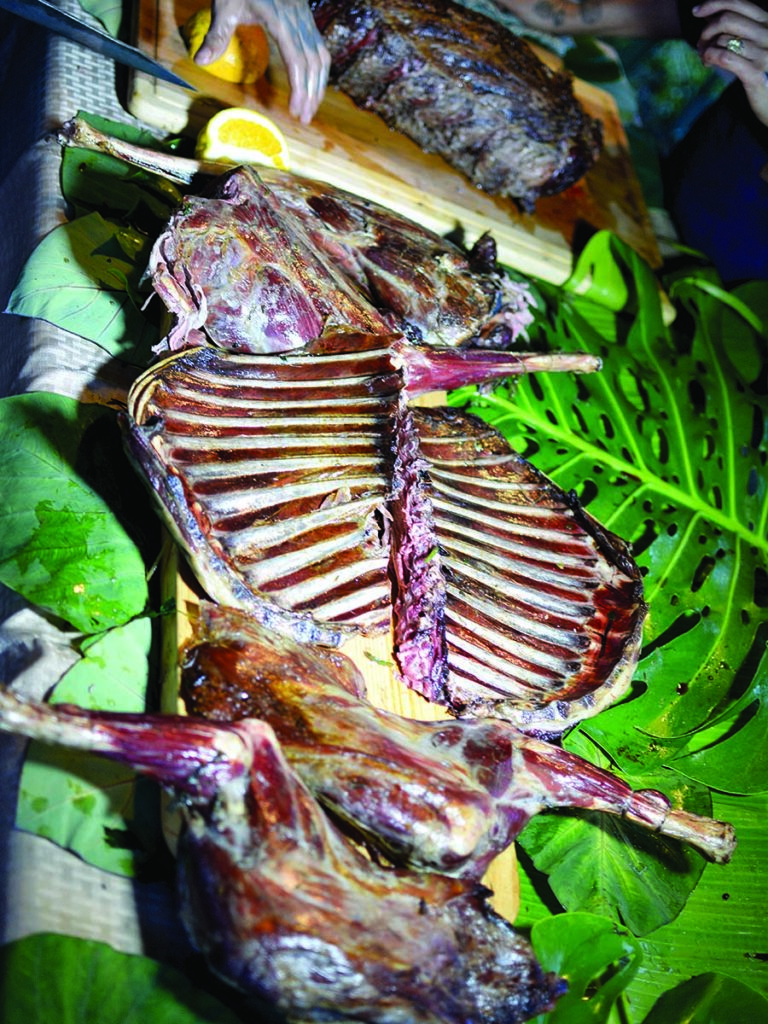
The laulau recipe elsewhere in this issue is a perfect example of the combination of national identities
Kamimura brings to her cuisine. While this traditional dish is simple in the number and type of ingredients it assembles, the flavor is multilayered and complex, weaving in Japanese and Brazilian notes to the wild pig and marlin harvested within sight of her outdoor kitchen.
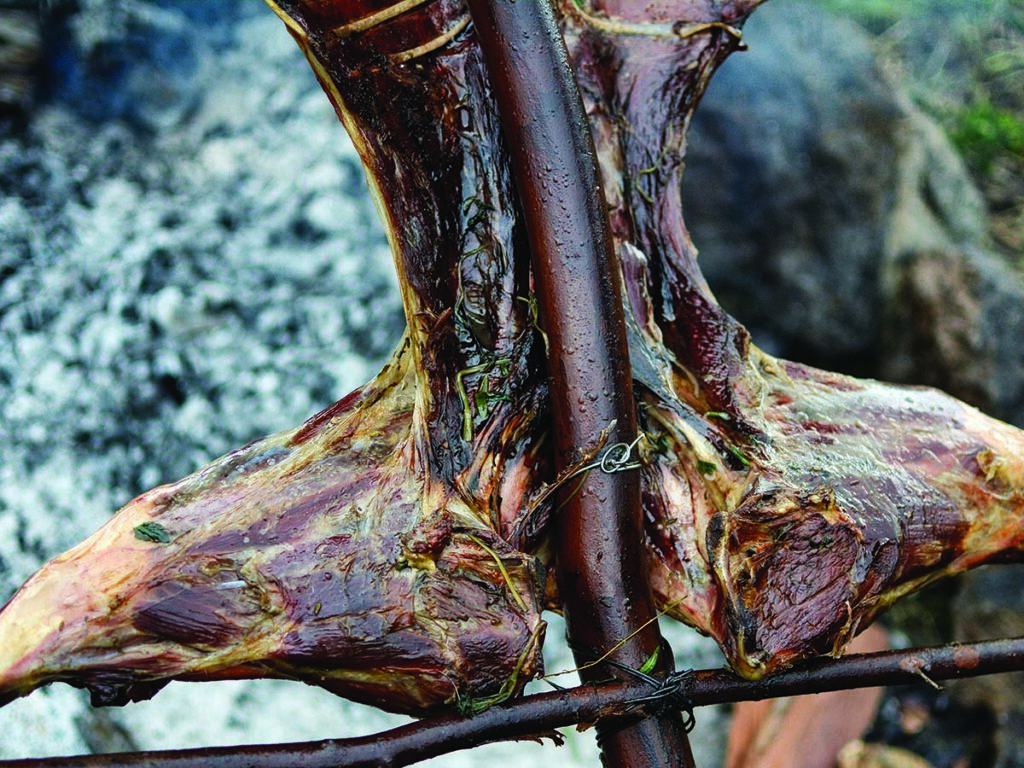
“Barbecue is huge in Brazil,” says Kamimura. “My grandparents were very simple people who lived in the country, and we would always gather around fire to cook. My grandmother would prepare such amazing dishes with inexpensive produce, and I’m trying to recreate my childhood flavors with local ingredients. For example, the fire-roasted pineapple with a brown sugar crust that I made to accompany this meal — that was my grandfather’s specialty.”
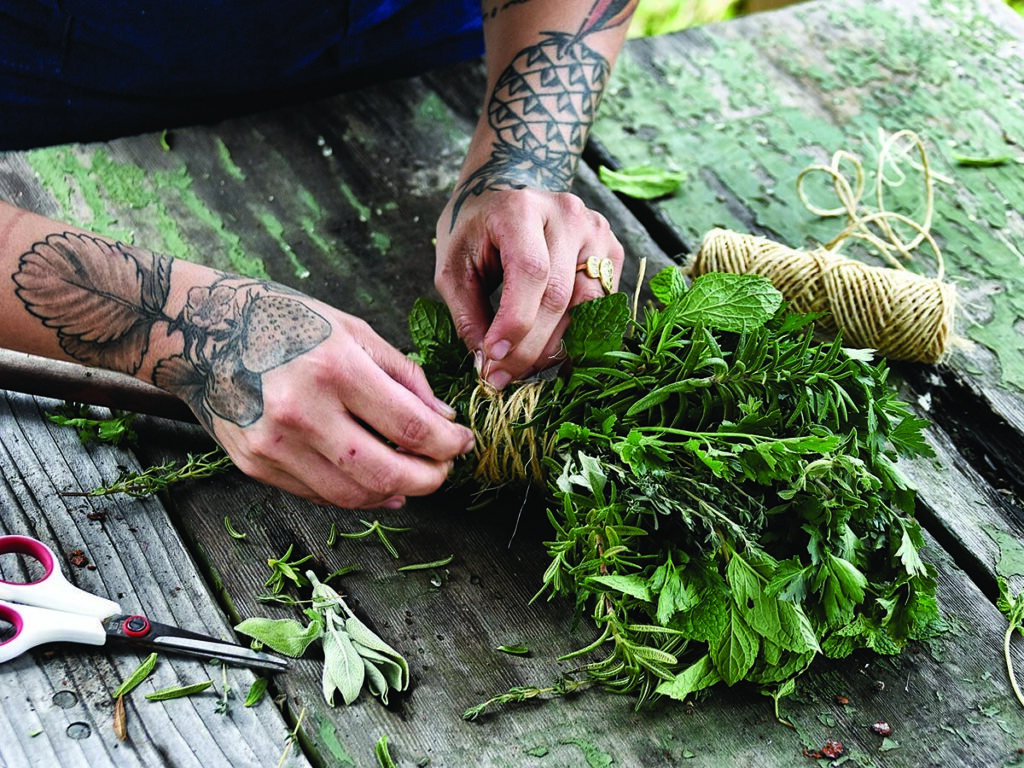
If you’re feeling inspired to go gaucho at your next family gathering, then be warned. It’s big commitment, which can’t be rushed, and the food dictates when the meal is ready. “Take you time and trust your gut. If you roast a sheep and one time it takes six hours, the next time it may take eight, but whatever you do, don’t rush it and let the flames touch the meat.
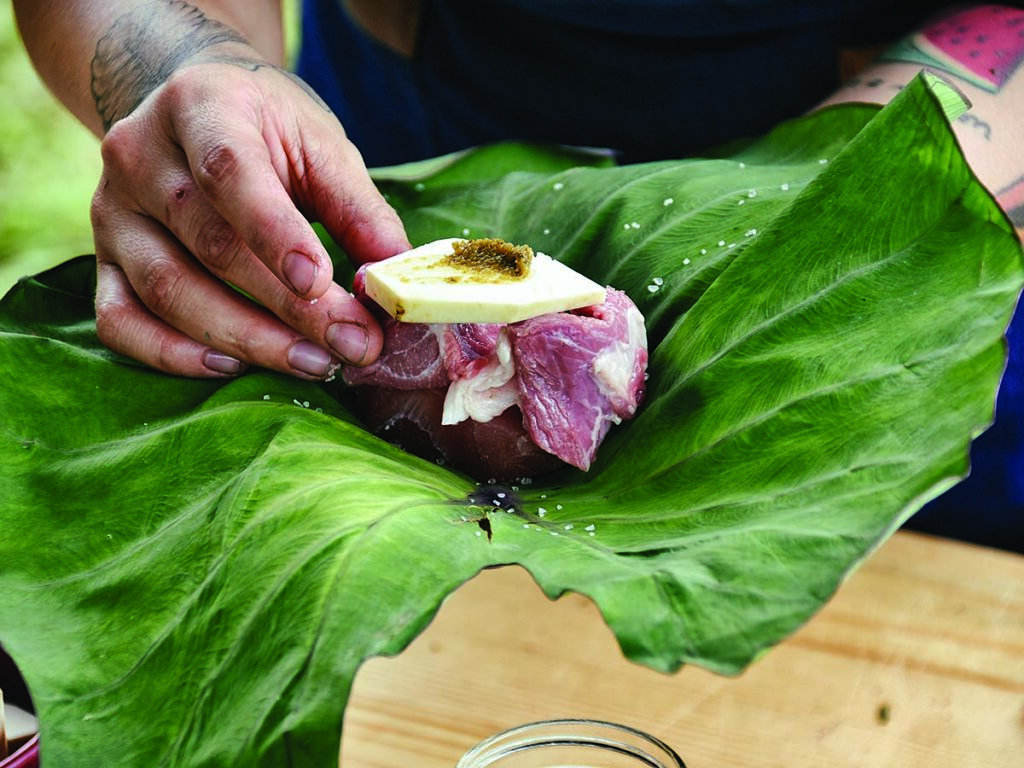
Editor’s Note: This article originally appeared in Carnivore Magazine Issue 3.
Why You Can Trust CARNIVORE
Since its launch, CarnivoreWeb.com has been a trusted authority on hunting, fishing and wild food, delivering expert insight for outdoorsmen who live the field-to-table lifestyle. More than a hunting and fishing site, CarnivoreWeb.com covers the full spectrum of the modern outdoors—from rifles, bows, and fishing gear to cooking, conservation and adventure.
Our contributors are drawn from across the hunting and angling world, including seasoned guides, lifelong hunters, competitive shooters and outdoor writers with decades of field experience. Every review, article and feature is built on firsthand testing, deep research, and an unwavering commitment to accuracy.
Commitment to Journalistic Principles
At CarnivoreWeb.com, upholding journalistic integrity is our top priority. We follow strict editorial standards to ensure all content is accurate, transparent, and unbiased. Our editors and writers operate independently, free from outside influence, advertisers or stakeholders. We adhere to established journalistic codes of ethics, holding ourselves accountable for the information we publish, correcting errors when they occur and disclosing any potential conflicts of interest.
This commitment ensures that our readers can trust CarnivoreWeb.com to provide reliable, honest coverage that helps them make informed decisions—whether selecting gear, honing outdoor skills or preparing wild game.
Find out more about our Editorial Standards and Evaluation Process


